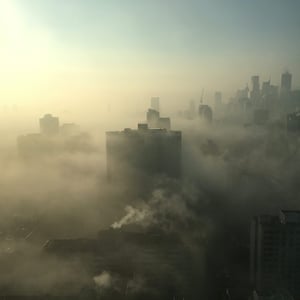COMPLEX TERRAIN AND PARTICAL DISPERSION: IMPLICATION FOR PORT CITIES
Our white paper ‘Complex Terrain and Particle Dispersion: Implications for Port Cities’. The white paper is focussed on air pollution as a result of port activities. This shortened version of the white paper is in the latest issue of the Ports & Harbors magazine (print and digital), take a look below.
EXCERPT
Air pollution is a global problem, frequently caused by human activities. Under normal conditions pollution particles are diluted and dispersed by different air circulation processes. For regions with complex terrain these airflow systems are interrupted, and when these locations coincide with concentrated emission centers, air quality is greatly reduced. The interaction between shipping emissions and these airflow factors has been highlighted here, assessing the impact of onshore breezes and air stagnation on pollution levels. Some mitigation strategies are explored, such as shipping behaviors, alternative fuel sources and vegetation barriers.
For coastlines in particular, discrepancies in the properties of water and land have an interesting effect on air flow systems. Water, having a higher heat capacity than land, heats up slower and retains heat for longer than its counterpart. This proximity to vast bodies of water like oceans, seas, and large lakes give rise to phenomena known as onshore and offshore breezes. Here, the heating fluctuations can drive air inland (onshore), or out to sea (offshore). Unfortunately, shipping emissions contain a noxious mix of unhealthy particles, and onshore breezes carry coastal emissions further inland. These breezes can travel for dozens of kilometers without interference, typically weakening further inland. Where onshore breezes meet high elevation terrain such as mountains, a stagnation of air mixing can occur, creating a health hazard for local population centres.



